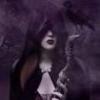
The Kermode bear /ˈkɜːrˌmoʊdi/ (Ursus americanus kermodei), also known as the "spirit bear" (particularly in British Columbia), is a subspecies of the American black bear living in the Central and North Coast regions of British Columbia, Canada. It is the official provincial mammal of British Columbia. It is noted for about 1⁄10 of their population having white or cream-colored coats like polar bears. This color is due to a double recessive gene unique in the subspecies. They are not albinos and not any more related to polar bears or the "blonde" brown bears of Alaska's "ABC Islands" than other members of their species. Sometimes, a mother Black bear can have a white cub.
Description
Spirit bears hold a prominent place in the oral traditions of the indigenous peoples of the area. They have also been featured in a National Geographic documentary. Scientists have found that black bears are not as effective at catching fish as white bears, as the white bears are less visible from the perspective of the fish. At night, the two colours of bears have similar success rates at catching fish, such as salmon, but during the day, the white bears are 30 percent more effective.
The Kermode bear was named after Frank Kermode, former director of the Royal B.C. Museum, who researched the subspecies and was a colleague of William Hornaday, the zoologist who described it. A common mispronunciation of Kermode as /kərˈmoʊdiː/ kər-moh-dee differs from the actual pronunciation of the Kermode surname, which originates on the Isle of Man and is properly pronounced /ˈkɜːrmoʊd/ kur-mohd, which is the usual way to pronounce Kermode bear. In the Isle of Man the name is pronounced /kərˈmoʊd/ kur-mohd.
Habitat
The U. a. kermodei subspecies ranges from Princess Royal Island to Prince Rupert, British Columbia on the coast, and inland toward Hazelton, British Columbia. It is known to the Tsimshian peoples as moksgm'ol. In the February 2006 Speech from the Throne by the Government of British Columbia, the Lieutenant Governor announced the government's intention to designate the Kermode, or spirit bear, as British Columbia's official animal. It was adopted as such in April of that year. A male Kermode bear can reach 225 kg (500 lb) or more, females are much smaller with a maximum weight of 135 kg (300 lb). Straight up, it stands 180 cm (5' 11") tall.
Fewer than 400 Kermode bears are estimated to exist in the coast area that stretches from Southeast Alaska southwards to the northern tip of Vancouver Island; about 120 inhabit the large Princess and Prince Royal Island. The largest concentration of the white bears inhabits 80-square-mile Gribbell Island, in the territory of the Gitga’at.
The bear's habitat is potentially under threat from the Enbridge Northern Gateway Pipelines, whose planned route passes near the Great Bear Rainforest. Native groups including the Gitga'at have opposed the pipeline.
REAL VAMPIRES LOVE VAMPIRE RAVE
Vampire Rave is a member of
Page generated in 0.0837 seconds.






